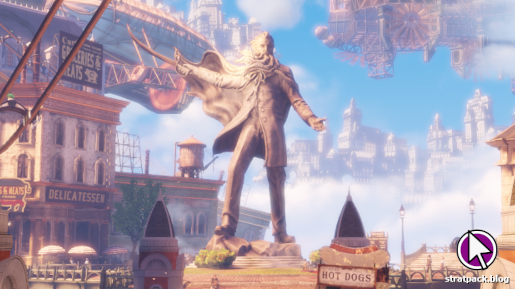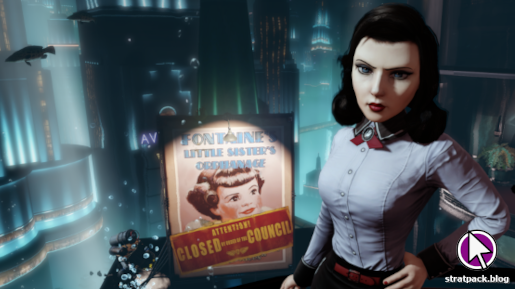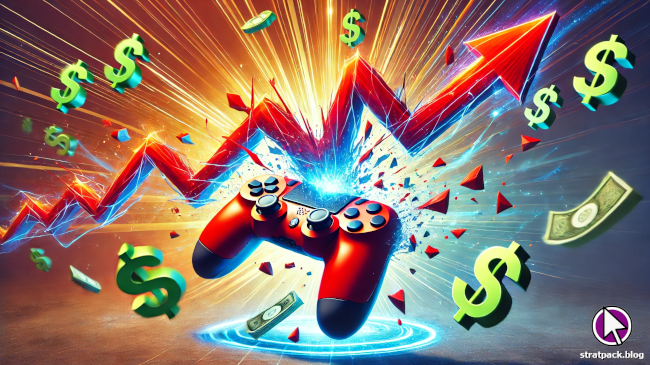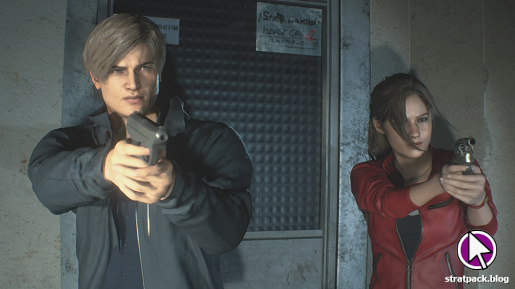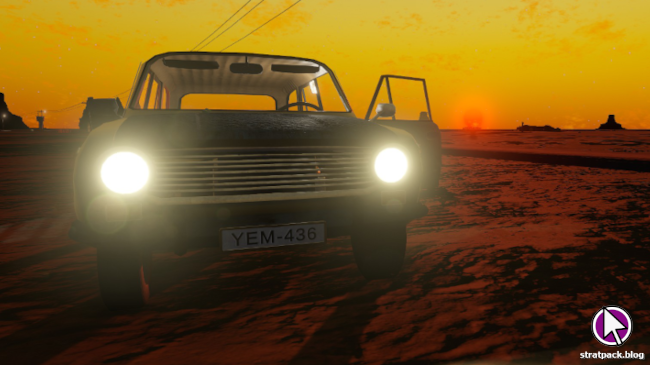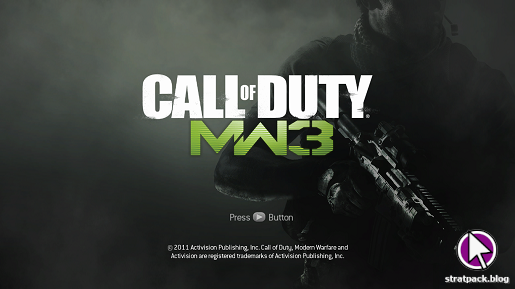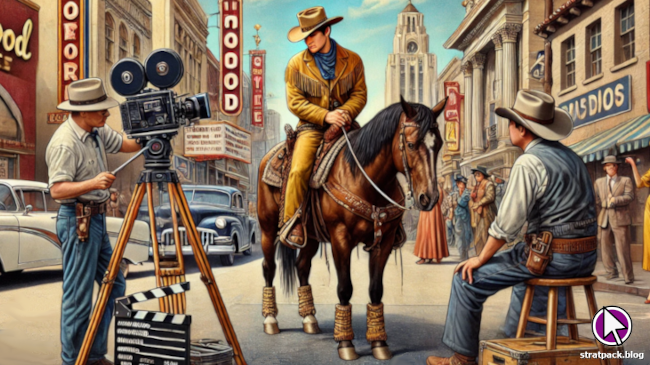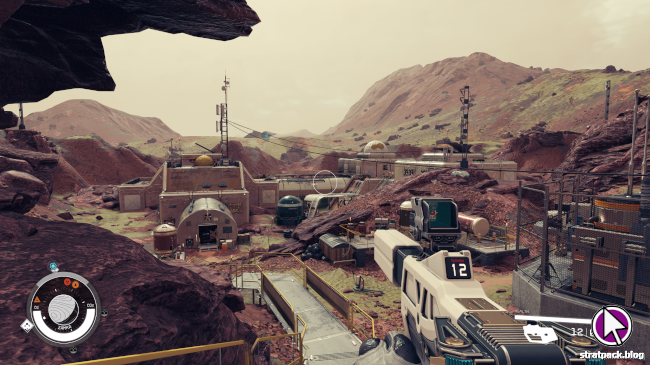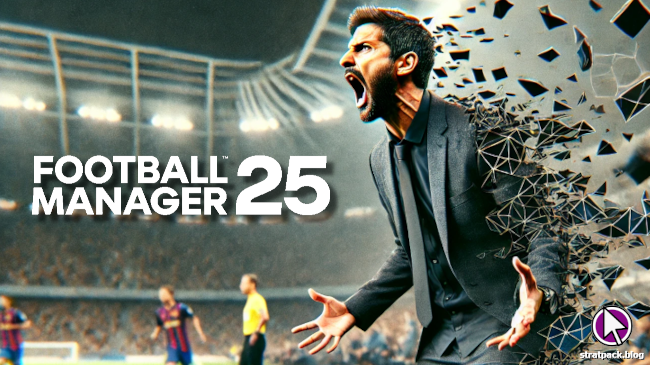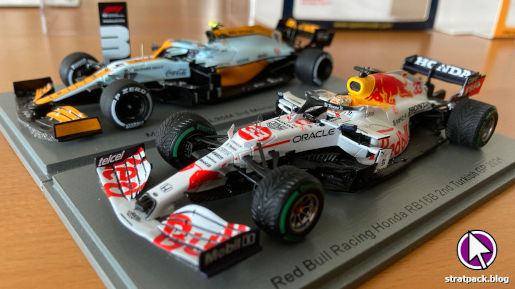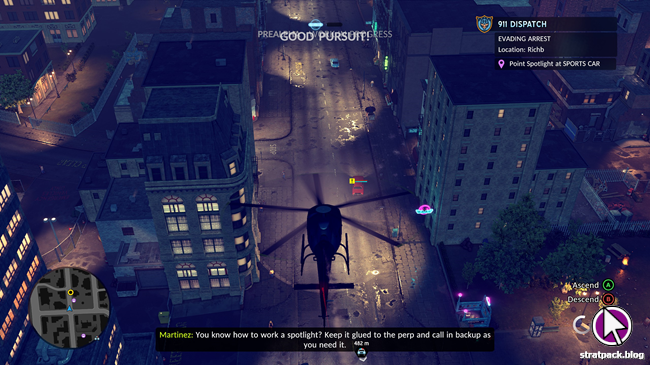
Astro Bot review - a shot of pure fun and PlayStation nostalgia
A lot of the weirdness in modern gaming comes from critics and consumers who are overly concerned with the business side of the industry, focused on sales figures, profitability, and competition between manufacturers rather than the quality of the games they play. It’s an odd predicament – perhaps unique to video games – and it’s one that Astro Bot blasts straight through. When you play this game, it’s impossible to think about anything except what’s on the screen.
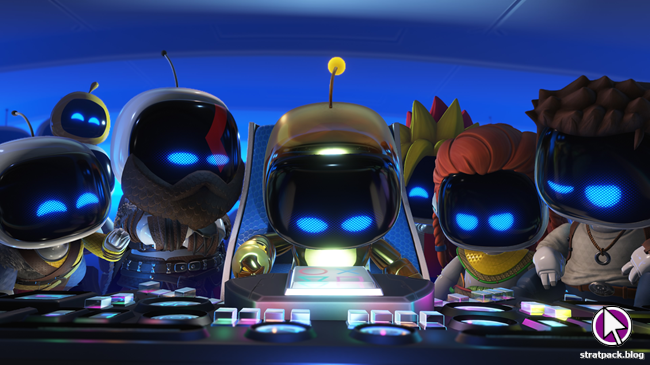
Much of that is due to the game’s retro simplicity – not in terms of difficulty, but in the premise and core gameplay: Astro Bot is on a level. He must get from Point A to Point B. There are obstacles in his way, either enemies or physical hurdles. You must find a way to overcome them, and have fun doing so.
That’s it. There’s no grand narrative here. No jarring commentary on real-world issues, or mechanics that make you sigh and yearn for what gaming once was. The only time my mind drifted from the level before my eyes was to consider the choices behind its design, and my conclusion was usually something like: “The person at Team Asobi who made this really knows how to make a fun game!”
Hopping through the galaxy
The beauty of Astro Bot’s story is that it barely has one. 300 bots are riding in a spaceship shaped like a PlayStation 5 when it is attacked by an alien. It explodes, its parts and the bots scattered across the galaxy. The alien steals the CPU, and Astro Bot blasts off on his controller mini-ship to find the parts and his friends.
There is one level per planet, with planets divided into star systems, each capped with a final boss and a stage themed around a beloved PlayStation game. Even exploring the galaxy map is a lot of fun, with secret levels to uncover and ships carrying collectables to chase. I couldn’t help but compare it to the expansive but much more sterile and borderline indecipherable map in Starfield.
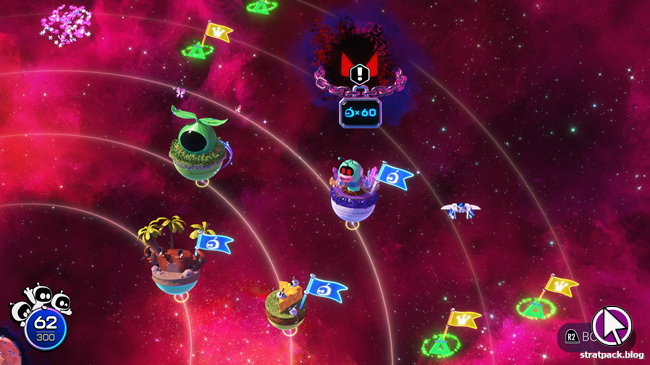
Each level has a handful of bots to save – some generic, some dressed up as characters from PlayStation history. When Astro finds them, they’re stowed inside his controller ship, and at the end of the level they’re sent back to the planet the ship crashed on, where the PS5 mothership’s carcass serves as the centrepiece of a museum full of all the bots you’ve discovered and rescued to date.
The other main collectable is jigsaw puzzle pieces. While Astro’s Playroom used these to construct a pretty mural, Astro Bot gives them a much more practical application. Completing a smaller puzzle unlocks new functionality at the crash site – a hub to change outfits or give your ship a lick of paint, for example.
Two-button challenge
Astro Bot’s gameplay is just as simple: he can run, jump, use boosters in his feet, and hit enemies. Don’t let that fool you – there’s some challenging platforming to be found, both in the main levels towards the end of the game, but especially in unlockable gauntlet stages themed around the PlayStation symbols (you’ll be very thankful that your PS5’s SSD allows near-instant reloads upon death).
While one mistake is usually enough to kill Astro, checkpoints are so frequent that you only ever lose a few seconds of progress. I was grateful for this as a way of reducing the risk when trying out a new mechanic or attempting an ambitious manoeuvre to reach some distant platform in search of treasure – vital in a game with so many secret areas and obscurely located bots to be rescued.

Many levels have a special upgrade, giving Astro a booster pack, an extended punch reach, or climbing abilities, for example. My favourites were a mod that enabled him to contract into a rolling ball a la Marble Blast, and a very creative stage that transformed him into a sponge, growing larger as he absorbed water.
The levels themselves also have creative ideas that add variety and sometimes completely change the premise midway through – an ability that shrinks Astro to the size of a mouse and unlocks access to a miniscule level-within-a-level, for example, or an Arabian village level that morphs into a sandstorm hellscape once the player lets a genie out of his lamp to wreak chaos across the area.
Retro futurism
To me, Astro Bot is what I dreamt gaming might look like when I was playing back in the 1990s. Sure, I expected graphics to improve, but I also thought that the ideas would expand with them. Instead, we got technically sophisticated titles that look great but play like semi-interactive films (especially on PlayStation).
Astro Bot might not look as lifelike as The Last of Us or God of War, but it is very crisp and smooth, which is important in a platformer. Where it really shines, though, is in its visual variety – there are grassy levels, snowy levels, underwater levels, spooky levels, retro Minecraft-esque levels where everything is made of tiny blocks… My favourite was an art deco casino stage that felt very Cuphead, complete with evil anthropomorphic cards throwing the rest of the deck at you.
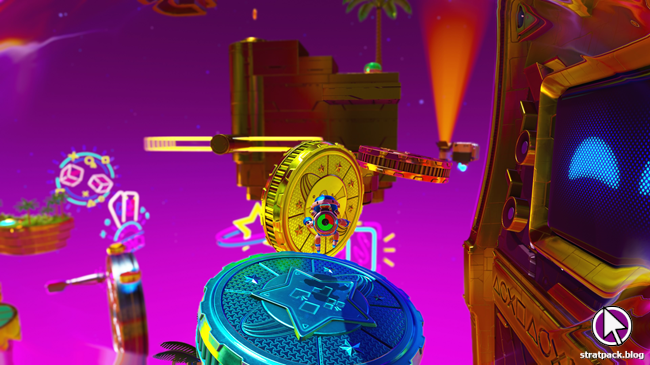
Many games have themed sections, but Astro Bot’s attention to detail sets it apart. Sometimes it’s in the animation – for example, the way Astro skates and twirls along icy surfaces. Sometimes it’s the enemies, who are given accessories and abilities to match the level’s theme. And sometimes it’s the sheer number of objects on the screen – each gem, leaf, or gold nugget is a separate item with full physics, and the game revels in letting you smash through full piles of them.
All of this is also extremely tactile. Astro Bot was built for the PS5’s controller, and makes better use of it than any other game I’ve played (edging out Gran Turismo 7, which does a solid job). You can sense each individual object and surface through its vibration, lending the world a very physical feel – especially in levels where Astro is curled up in a ball, rolling over panels adorned with spikes.
Fun above all else
While getting from A to B is the name of the game, Team Asobi has excelled at adding unique attractions for the player to investigate. These are usually clearly signposted, and whenever you find yourself asking “Can I do X?”, the answer is a resounding yes, rewarded by coins. Can I kick that football into the goal? Sure. Can I jump through the hoop with those dolphins? You bet – here’s your prize.
Another favourite moment occurred on a snowy level, where I encountered two penguins building the base of a snowman. To my delight, Astro Bot was able to nudge the ball around the area and collect snow from the ground until he’d built a snowball bigger than himself. These might sound like inconsequential details, but they demonstrate how the developer prioritised fun above all else.
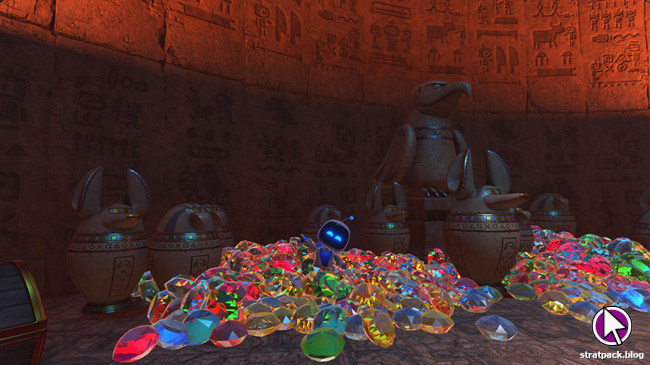
One more variation on the genre comes in those setups involving large numbers of objects and space to play with the physics. I mentioned that sometimes this means Astro wading through chest-high pits of items, but it can also be a pile of inflatables stacked precariously at the top of a water slide, or opening a compartment that dumps a squirrel’s entire store of acorns on Astro’s head.
The fun continues on the crash planet, where certain areas and activities require tens, or even hundreds, of your rescued bots to chip in to lift heavy objects or form human ladders. It’s cute to see usually hostile faces like Psycho Mantis contribute to the effort, and some stunts and animations are wacky in and of themselves. If you’ve never seen 60 bots swing a pig by the tail, you haven’t lived.
Branded brethren
Aside from the gameplay, one of the most notable things about Astro Bot is how closely it is tied to the PlayStation brand. The objective of the entire game is to reconstruct a giant PS5, of course, and the novelty for many players will come from collecting characters and unlocking their trademark items and scenes – even if, classily, those individuals and their games are never directly named.
That’s nice, but the more surprising nostalgia for me came from smaller details in the levels. The coins Astro collects (which always reminded me of chocolate coins) are stamped with the PlayStation logo. The save slots are PS1 memory cards. Some ropes and wires are PS1 controller extension cables, complete with chunky connectors. And – perhaps my giddiest discovery – even the raindrops in the spooky levels form the controller button symbols when they hit the ground.
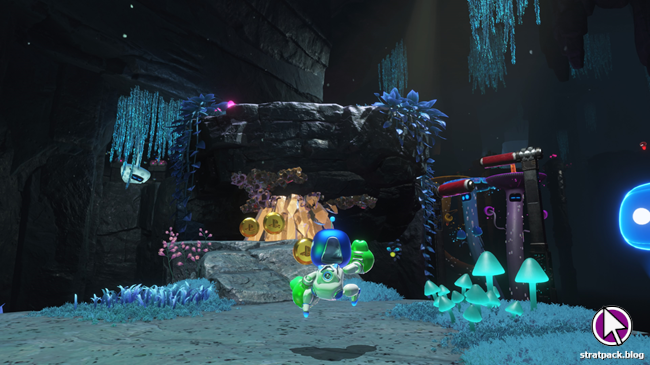
PlayStation branding is often very plain. Its logo and trademarks are increasingly minimalist, and as the generations have gone on any remaining colour has been sucked out. Even the symbols on the PS5 controller are grey, abandoning their signature hues. Sony has little of the fun and vibrance of a brand like Nintendo.
But when you take all those icons, restore their colour, and place them amid the bright, cutesy vibe of Astro Bot, it’s amazing what a difference it makes. This is the first time in years – perhaps decades – that the PlayStation brand has sparked any kind of wonder in me, and at times the throwbacks triggered the shot of adrenaline I used to enjoy watching that PS1 boot screen as a kid.
Generational talent
I wouldn’t want every game to be Astro Bot. There is room for more serious titles that try to look realistic and tackle impactful themes. But I would like more games to be like Astro Bot. Unless you have a Nintendo console or the stomach for sub-par kids’ games, it’s very rare for a game to be such all-out fun. It’s a refreshing way to switch off and focus entirely on gameplay, like I did 25 years ago.
But Astro Bot took roughly 15 hours to play every level from start to finish. I’m not complaining about that – its RRP is lower than most games and I’d rather play a concise game of consistent quality than an endless collectathon – but it does mean that it’s too long to run on vibes alone. The gameplay has to match.
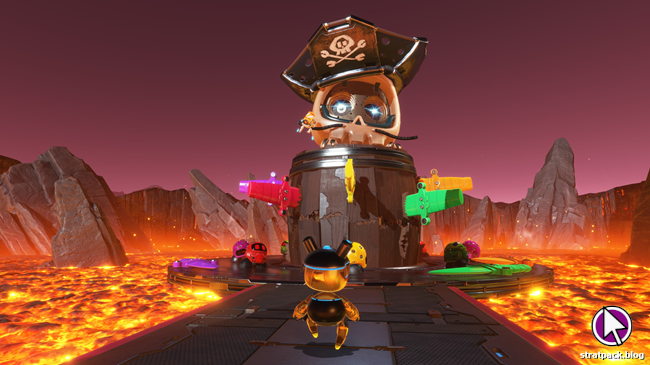
Team Asobi has delivered near-flawlessly in that department. Astro Bot’s controls are natural, consistent, and responsive – everything you need in a platformer where a split-second jump can have huge stakes – and the controller feedback elevates the experience to joyful levels. The controls are solid enough to support not only the casual explore-and-progress levels, but also the more challenging gauntlets that present one threat after another with zero thinking time.
So the game plays well. It does things with the PS5 controller that no other game has. The graphics, while simple and bright, are crisp and polished. It’s all on the disc, with no live services or add-ons. And – perhaps most importantly – Astro Bot puts fun front and centre. Together, it’s the sum of its parts and then some, the most complete package we’ve had so far this generation. If you have a PS5, even if platformers aren’t your usual jam, I very much recommend you play it.
5/5




